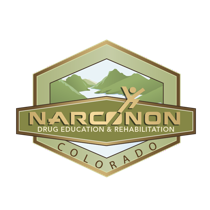The Fourth Wave of the Drug Epidemic Has Hit

By now, we pretty much all know the story of the United States addiction epidemic. What started out as a prescription pill problem, morphed into a heroin issue and then a fentanyl crisis. These three overlapping events have often been referred to as the “Three Waves of The United States Opioid Epidemic.” We have now entered into the “Fourth Wave” of the overdose epidemic as death rates from stimulants have begun to rise. According to recent US death certificate data cocaine overdoses have shot up to 15,000 deaths per year and methamphetamine overdose deaths have gone up to 11,000 per year.
Throughout history, drug popularity has often gone back and forth between depressants and stimulants, and it appears that while we still have an opioid problem on our hands, the pendulum has begun to swing back towards stimulants. Many drug users have begun to make the switch with the misguided thought that stimulants are somehow safer. With the skyrocketing rates of opioid overdose deaths we have experienced over the past decade, it is easy to see why someone may think that switching to stimulants would lower their risk of death. Unfortunately, that is simply not the case.
Although it is extremely addictive, methamphetamine has traditionally not been a drug that someone would necessarily worry about overdosing and dying from. Now that the drug is being produced in super labs by drug cartels, it is more powerful and less expensive than ever before. This has resulted in a higher risk of addiction and overdose for users. The other unexpected danger that comes from using cocaine and meth nowadays is the potential risk of unintentionally consuming fentanyl. Because fentanyl is so cheap, it is being mixed into just about everything in the illicit drug trade, even stimulants.
The most dangerous part about fentanyl being found in stimulants is the effect it will have on people who do not have an opioid tolerance. Illicit fentanyl is dangerous even for the regular opioid user but someone who does not have a tolerance to the drug does not stand much of a fighting chance against it. “Casual drug users” who only use on occasion also put themselves at extreme risk for this very reason. People purchasing stimulant drugs usually are not expecting the possibility that there may be opioids in their drugs and, therefore, do not have opioid overdose reversal medications on hand.
There are many people who are knowingly combining stimulants such as cocaine or methamphetamine with depressants such as heroin or fentanyl. While it is always a dangerous practice to combine the two, it is even riskier now considering the increased potency of both types of drugs. This has been another contributing factor in the increased rates of stimulant related deaths.
Colorado has seen its share of growing death rates involving methamphetamine. In 2017 there were 280 deaths in Colorado related to the drug. According to data from the Colorado Department of Health and Environment for the first time in ten years, there have been more overdose deaths from meth in Colorado than heroin. Other states such as Ohio have also seen an alarming rise in the number of deaths related to meth use. The number of deaths in Ohio related to methamphetamine more than doubled going from 233 in 2016 up to 526 in 2017.
The bottom line is that a person never really knows what it is that they are buying when purchasing drugs off the street. When it comes to “quality control” in the illicit drug market, there is none, and therefore, no one is really safe. The risks of using illegal drugs are now higher than ever, and it is now more critical than ever before that those who are struggling with addiction receive the help that they need. More often than not, their very lives depend on it.
Sources:
- https://www.cdc.gov/nchs/nvss/vsrr/drug-overdose-data.htm
- https://www.buzzfeednews.com/article/danvergano/cocaine-meth-overdose-wave
- https://www.buzzfeednews.com/article/danvergano/opioid-overdose-decade-war-on-drugs
- http://www.cpr.org/news/story/methamphetamine-drives-ever-climbing-overdose-death-numbers-in-colorado


